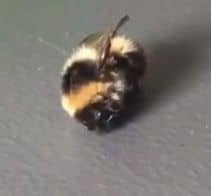The New York Times sent reporter Jim Gorman and photographer Katie Orlinsky to report on a team from UC Riverside tracking Bombus polaris, the arctic bumblebee.
Led by S. Hollis Woodard, an assistant professor of entomology, this team of six pollinator and plant experts traveled to the Toolik Field Station in northern Alaska to learn more about the range and pollination habits of a bee that has the ability to regulate its own body temperature.
On Tuesday, July 5, The New York Times Science Facebook page hosted a live video chat with the general public that has been viewed 93,000 times. It lasts 23 minutes and gives Professor Woodard the stage to talk about the bee’s role at the cutting edge of global climate change.
She said bumblebees are the most important native pollinator in the United States, and they are incredibly popular with the public.
“They are the panda bear of the insect world,” she said. They are big and fuzzy and they move really slow.”
She described how one member of the team is an expert in drying and fluffing the fuzzy bees so they can be identified more accurately. And yes, their fuzzy quality helps insulate and protect them in cold weather.
The arctic bumblebee pollinates important flowering plants, like ligonberry, cloudberry, and the arctic poppy. It is unclear how climate change could change that relationship.
“One of the questions we want to ask is whether other bees will migrate up here as the temperature rises,” Woodard said. She said these arctic bees may teach us some really important lessons that can be applied to more southern bees.
To a viewer’s question about whether these bumblebees are an endangered species, Woodard explained that they aren’t classified that way because scientists still don’t know enough about them.
She said this trip will be the first of many to try to document more information about the bee.
Sean Nealon, a public information officer with Strategic Communications, traveled with the researchers to gather material for a story in the Fall edition of the UCR Magazine. The team put up with many mosquitoes, short showers, and sunshine 24 hours a day.


